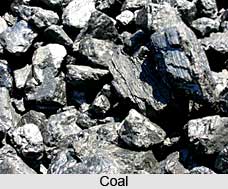 The Ministry of Coal has the overall responsibility of determining policies and strategies in respect of exploration and development of Indian coal and lignite reserves, sanctioning of important projects of high value and for deciding all related issues. Under the administrative control of the Ministry, these key functions are exercised through the Public Sector Undertakings, namely, Coal India Ltd. and its subsidiaries and Neyveli Lignite Corporation Limited. Other than Coal India Ltd. and Neyveli Lignite Corporation Ltd., the Ministry of Coal also has a joint venture with the Government of Andhra Pradesh called Singareni Collieries Company Limited. Government of Andhra Pradesh holds 51 percent equity and Government of India holds 49 percent equity.
The Ministry of Coal has the overall responsibility of determining policies and strategies in respect of exploration and development of Indian coal and lignite reserves, sanctioning of important projects of high value and for deciding all related issues. Under the administrative control of the Ministry, these key functions are exercised through the Public Sector Undertakings, namely, Coal India Ltd. and its subsidiaries and Neyveli Lignite Corporation Limited. Other than Coal India Ltd. and Neyveli Lignite Corporation Ltd., the Ministry of Coal also has a joint venture with the Government of Andhra Pradesh called Singareni Collieries Company Limited. Government of Andhra Pradesh holds 51 percent equity and Government of India holds 49 percent equity.
Organisation of Ministry of Coal
At the Secretariat level, the Ministry is headed by a Secretary who is assisted by one Additional Secretary, three Joint Secretaries (including the Financial Adviser), one Project Advisor, one Economic Adviser, six Directors, two Deputy Secretaries, nine Under Secretaries, eighteen Section Officers, one Assistant Director (Grade IV), One Assistant Director (Official Language) and one Deputy Controller of Accounts, and their supporting staff. The Companies and agencies under administrative control of the Ministry include Coal India Limited (Cil) And Its Subsidiaries; Neyveli Lignite Corporation (NLC); Singraeni Colliery Company Limited (SCCL); Coal Mines Provident Fund Organisation (CMPFO); Coal Controller and Commissioner of Payments.
Functions of Ministry of Coal
The Department of Coal is responsible for development and exploitation of coal and lignite reserves in India. The subjects allocated to the Department include attached and sub-ordinate or other organizations including PSUs concerned with their subjects under the Government of India (Allocation of Business) Rules, 1961. Accordingly, the broadly defined functions include:
Exploration and development of coking coal and non-coking coal and lignite deposits in India;
All matters relating to production, supply, distribution and prices of coal;
Development and operation of coal washeries other than those for which Department of Steel (ISPAT Vibhag) is responsible;
Low Temperature carbonization of coal and production of synthetic oil from coal;
Administration of the Coal Mines (Conservation and Development) Act, 1974 (28 of 1974);
The Coal Mines Provident Fund Organization;
The Coal Mines Welfare Organization;
Administration of the Coal Mines Provident Fund and Miscellaneous Provision Act, 1948 (46 of 1948);
Administration of the Coal Mines Labour Welfare Fund Act, 1947 (32 of 1947);
Rules under the Mines Act, 1952 (32 of 1952) for the levy and collection of duty of excise on coke and coal produced and dispatched from mines and administration of rescue fund;
Administration of the Coal Bearing Areas (Acquisition and Development) Act, 1957 (20 of 1957);
Administration of the Mines and Minerals (Development and Regulation) Act, 1957 (67 of 1957) and other Union Laws in so far the said Act and Laws relate to coal and lignite and sand for stowing, business incidental to such administration including questions concerning various States.




















